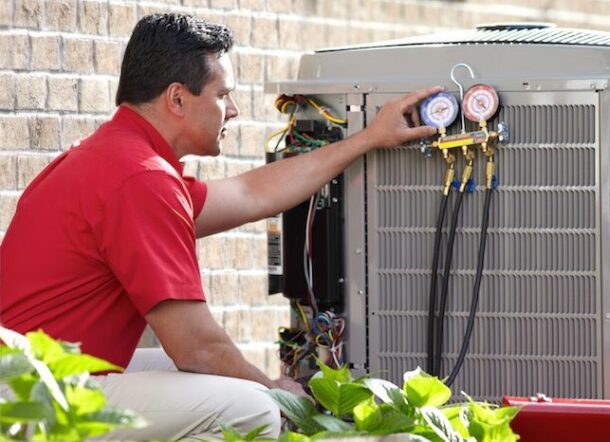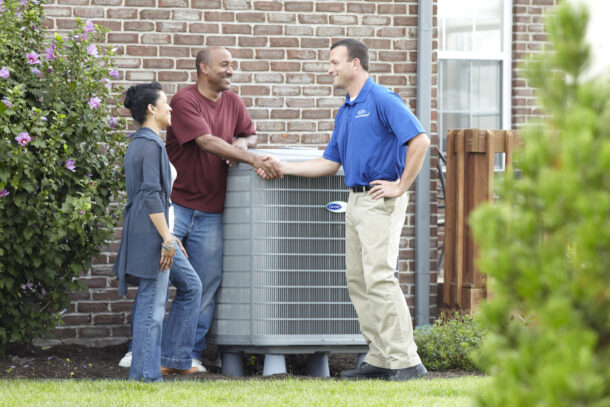[ad_1]
A home should ideally feel well-maintained and provide the comfort of a good indoor climate. With the rise in temperatures, you need an effective air conditioning unit. The question is, though, how do homeowners know when it’s time to replace the AC? This guide offers unmistakable signs and tangible tips to determine whether or not you are ready for a new one.

Frequent Repairs
One of the most apparent and common signs of a malfunctioning or outdated AC system is having to get it repaired continually. The investment cost is often better spent on a new system, especially if the unit is constantly needed and its repair costs are rising. Regular malfunctions not only make you uncomfortable, but they can also hurt your pocket heavily.
Rising Energy Bills
Increasing energy bills are a signal that your system may be inefficient. Older systems truly use more electric power to achieve the same level of cooling. Replacing it with a more efficient unit could mean less energy use and lower costs. Over time, you can check energy bills to see if the consistent rates or amounts indicate a change is in order. You can also do preventive maintenance with Professional Cincinnati Air Services.
Inconsistent Temperatures
If certain rooms feel warmer or cooler than others, the AC system may not be functioning optimally. Uneven cooling often indicates that the unit is struggling to distribute air evenly. This can be due to aging components or an improperly sized system. Upgrading could ensure consistent comfort throughout the home and help you set the right temperature.
Unusual Sounds or Odors
You don’t ignore plumbing tasks when you hear strange noises, right? In the same way, you should never ignore strange sounds or odors coming from an AC unit. Familiar sounds like grinding, squealing, or rattling usually signal a mechanical problem. A musty or burning smell could mean mold or an electrical issue. These can affect performance and be a safety issue, proving it’s time for a new system.
Age of the System
The average lifespan of an AC unit is between 10 and 15 years. If the system is nearing or past this range, an upgrade may be needed. Newer equipment is more efficient. Older systems are often not as efficient or technologically advanced as modern units, which means they may be less effective at cooling and cost more money due to excessive energy use.
Poor Air Quality
If an AC system has stopped being able to filter air well, it may mean poor-quality air in the house. Dust, allergens, and pollutants can circulate throughout the house, causing health issues. Installing a more recent system with advanced filtration can improve indoor air quality while making your home healthier.

Lack of Smart Features
Newer systems generally feature smart controls that can help them operate more efficiently. Such features include programmable thermostats, remote access, and tracking energy usage. When a system lacks these capabilities, upgrades can offer greater flexibility and control over the home’s temperature.
Frequent Cycling
If the AC unit cycles on and off frequently before the set temperature is reached, it may be short-cycling. This may cause wear and higher energy bills. Factors that may lead to short cycling include a defective thermostat and an oversized system. A new unit could fix these problems and work much more effectively.
Evaluating Your Options
Upgrading means several alternatives exist to choose from. Make sure to thoroughly research and compare different models based on energy efficiency and features that meet an individual’s or family’s particular needs. Specialists like Professional Cincinnati Air Services can also offer insight into the best options.
Environmental Impact
Many air-conditioning systems installed before 2010 use refrigerants that are bad for the environment. Today’s models use more environmentally friendly options, reducing greenhouse gas impact. This improvement is not just a gain for a home but also a step toward helping with environmental conservation.
Financial Considerations
The upfront price of a new air conditioning system may be substantial. However, with minimal repair service bills and reduced regular monthly power expenses, the investment will ultimately justify the cost. To help ease some of the financial strain, many manufacturers offer financing. So always think of the short-term and long-term financial impacts before an upgrade.
Conclusion
When deciding whether to upgrade the air conditioning system, it is necessary to consider the state of the current system, its age, and efficiency. By acknowledging the signs above, homeowners may use good judgment in their decisions, which leads to increased comfort and savings. For any home, upgrading to a modern, efficient system can keep homes cool and help create a healthier indoor environment, making it a wise investment.
[ad_2]
Source link
